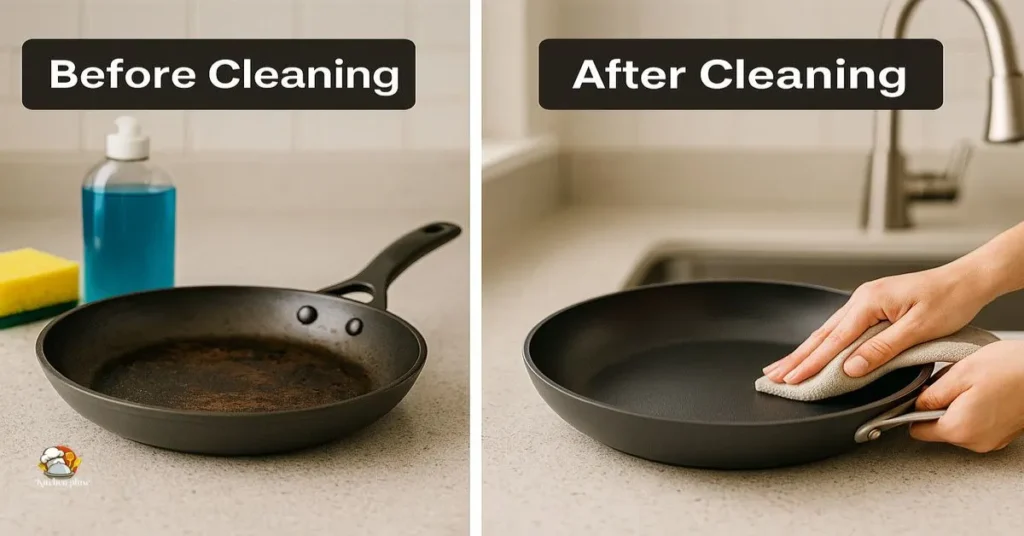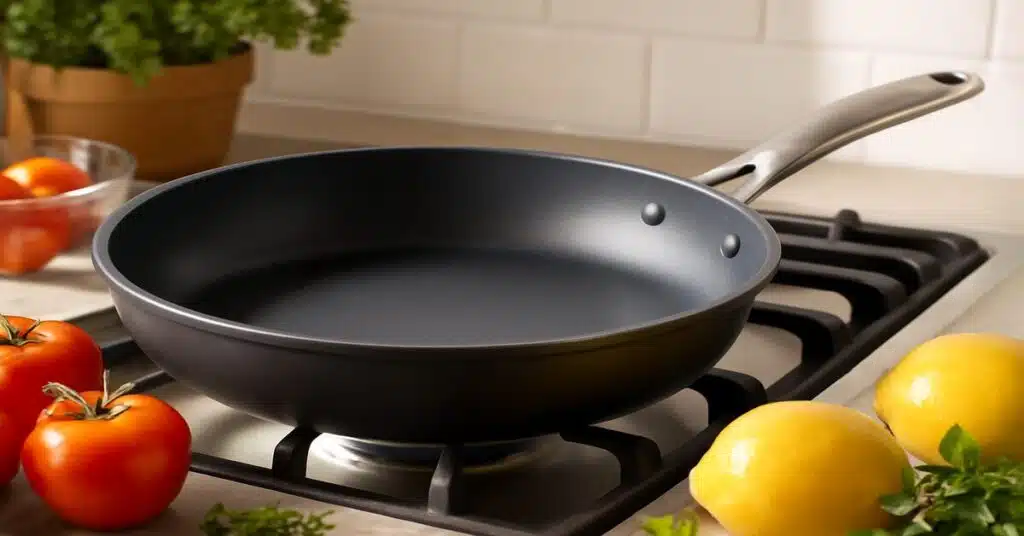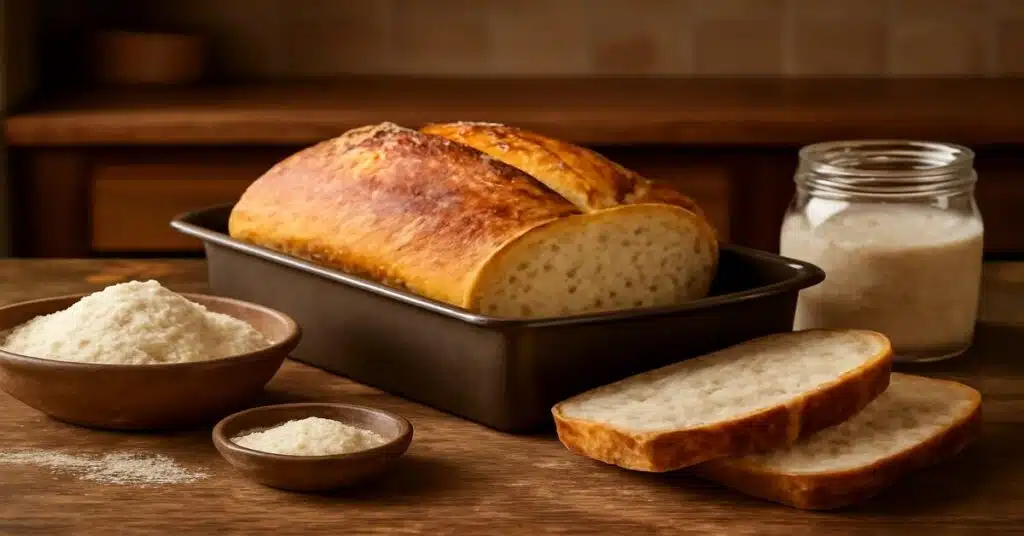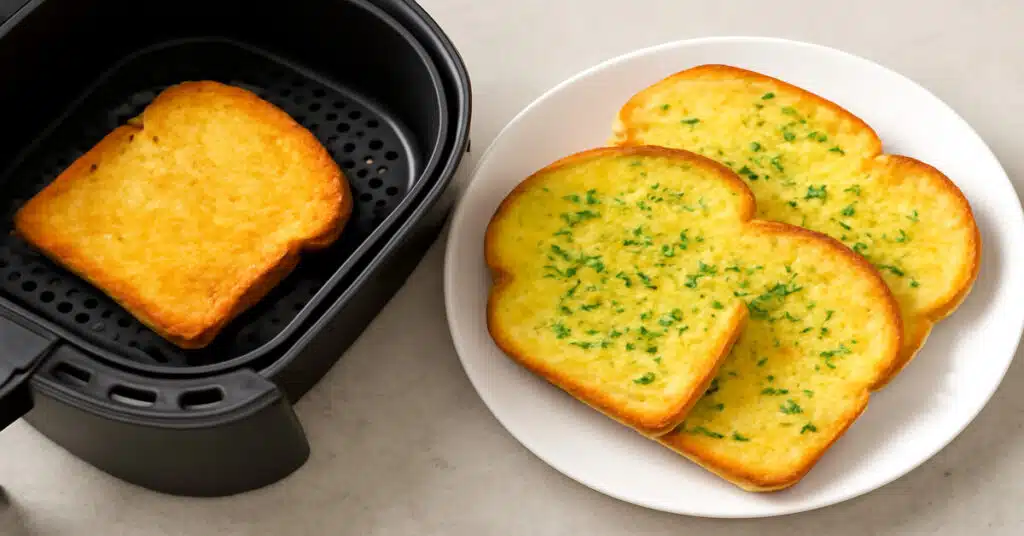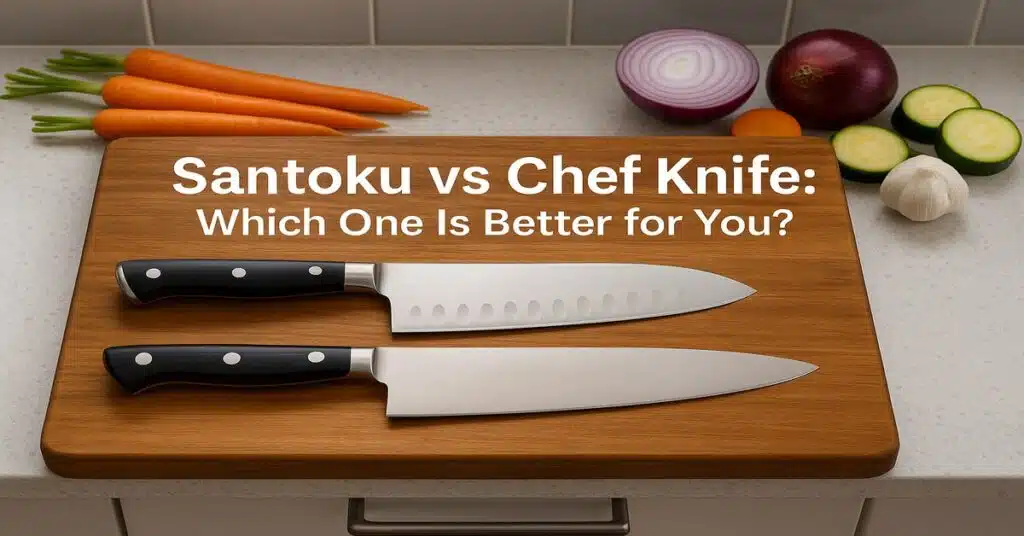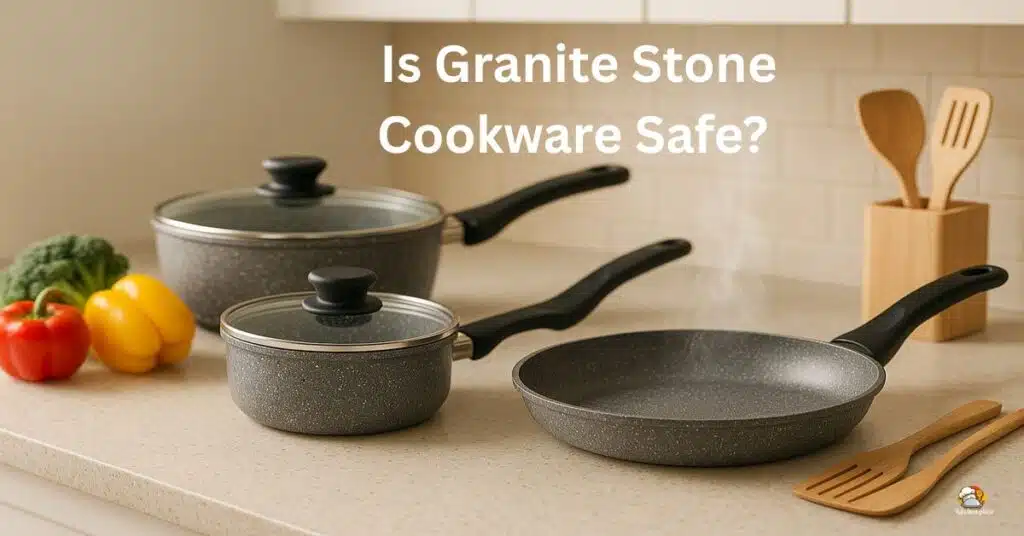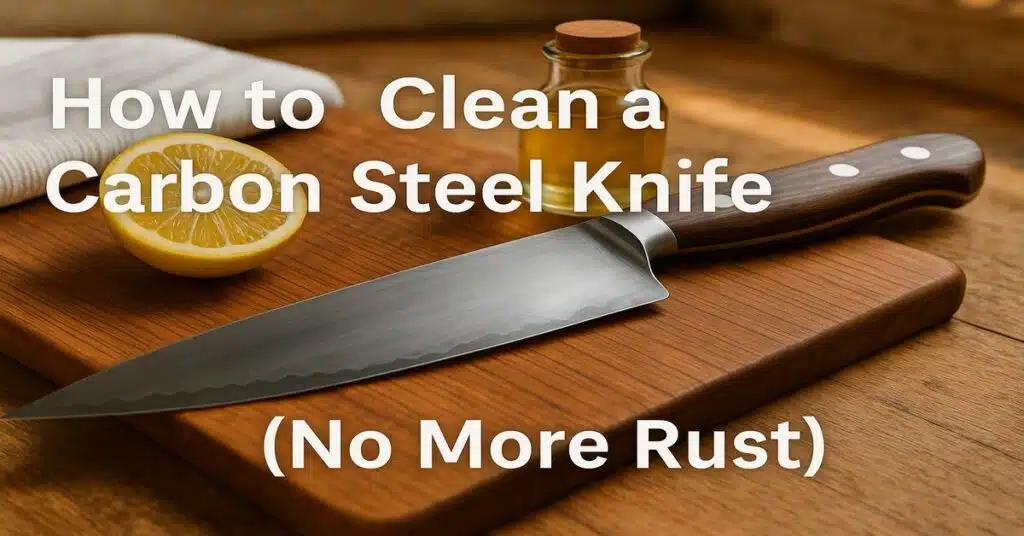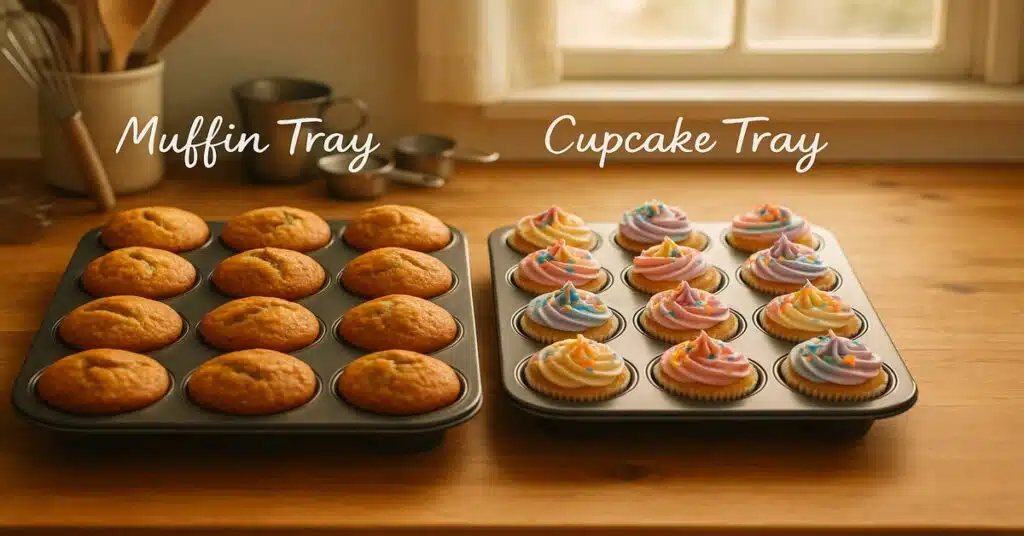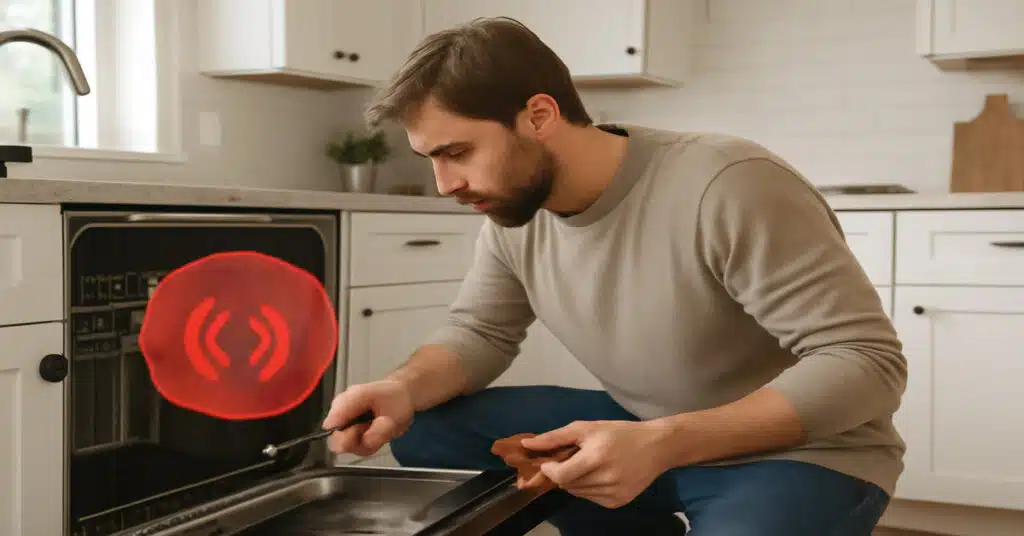Hard anodized cookware is strong, stylish, and lasts for years. But if you don’t know how to clean hard anodized cookware the right way, the nonstick coating can get damaged in just a few months.
The best way to clean hard anodized cookware is with mild dish soap, warm water, and a soft sponge. Avoid bleach, steel wool, and strong dishwasher cycles to protect the coating.
I’ve been cooking with Calphalon, T-fal, and Cuisinart pans for years. From burnt food messes to everyday cleaning, I’ve learned exactly what helps these pans stay scratch-free and safe.
In this 2025 step-by-step guide, I’ll show you:
- Daily cleaning tips that keep cookware looking new.
- Easy hacks to remove burnt food and stains.
- Brand-specific advice on what’s dishwasher safe.
- Mistakes to avoid so your pans last longer.
👉 Still choosing the right cookware? Check my detailed guide: Best Hard Anodized Cookware 2025.
Why Cleaning Hard Anodized Cookware the Right Way Matters
Hard anodized cookware usually lasts 5–10 years, but wrong cleaning habits can cut that life in half. Using bleach, steel wool, or harsh dishwasher cycles may damage the nonstick coating and even void the warranty.
Most brands like Calphalon, T-fal, and Cuisinart give clear cleaning instructions. Ignoring these not only ruins performance but also makes warranty claims harder to approve.
Proper cookware maintenance ensures:
- Longer lifespan → saves money in the long run.
- Scratch-free surface → food cooks evenly without sticking.
- Safe, toxin-free cooking → FDA-approved coatings stay intact.
👉 For a complete breakdown of strengths and weaknesses, see my guide: Hard Anodized Cookware Pros and Cons.
Daily Cleaning Routine (Step-by-Step)
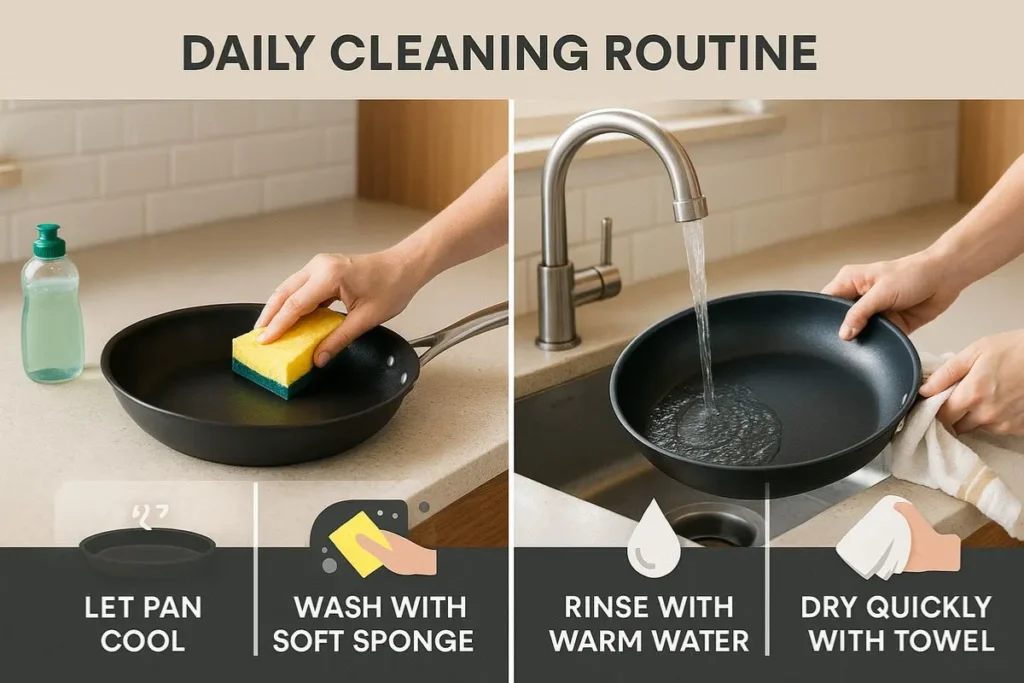
Here’s the safest daily care routine for hard anodized cookware:
- Let the pan cool down before washing. This prevents warping.
- Use mild dish soap such as Dawn or Seventh Generation. These are safe for the nonstick coating.
- Scrub gently with a soft sponge or nylon scrubber. Never use steel wool.
- Rinse with warm water and wipe with a clean cloth.
- Dry quickly with a towel. This stops water spots and helps the pan last longer.
Avoid: bleach, harsh detergents, or soaking pans overnight. These weaken the nonstick coating and shorten the lifespan.
This daily cleaning method works for trusted U.S. brands like Calphalon, T-fal, Circulon, and Rachael Ray.
Deep Cleaning Burnt or Stained Pans
Sometimes food burns or sticks badly, but you don’t need harsh chemicals to fix it. Here are safe deep cleaning methods for hard anodized cookware:
Baking Soda + Warm Water Soak:
- Mix 2 tablespoons of baking soda with warm water in the pan, following FDA food-safe cleaning guidance.
- Let it soak for 20–30 minutes to loosen burnt food.
- Scrub gently with a nylon brush or soft sponge.
Vinegar for Tough Stains:
- Add water and 2 tablespoons of vinegar to the pan, following USDA food safety guidance.
- Boil for a few minutes, then let it cool.
- Wipe clean with a soft cloth.
Gentle Nylon Scrubber:
- For stubborn residue, use a non-abrasive nylon pad.
- Avoid steel wool or metal brushes—they scratch the nonstick coating.
👉 Want to compare cleaning difficulty between cookware types? See my guide: Hard Anodized vs Stainless Steel Cookware.
Dishwasher – Safe or Not?
Many cookware brands claim their pans are “dishwasher safe.” But from my own tests with Calphalon, T-fal, and Cuisinart, I can confirm one thing: hand washing always keeps your cookware in better shape.
Why is hand washing better?
- Dishwashers use very high heat and strong detergents.
- These slowly damage the nonstick coating and leave scratches.
- Over time, this shortens the 5–10 year coating lifespan and may even void the warranty.
Here’s a quick brand comparison:
| Brand | Dishwasher Safe | Real Recommendation |
| Calphalon | ❌ No | Hand wash only |
| T-fal | ✅ Yes | Still safer by hand |
| Rachael Ray | ❌ No | Hand wash only |
| Cuisinart | ❌ No | Hand wash only |
👉 Want to know the full list of pros and cons? Read my detailed guide: Hard Anodized Cookware Pros and Cons.
Extra Care Tips to Extend Lifespan
If you want your hard anodized cookware to last 7–10 years or more, follow these simple care tips:
- Use wooden or silicone utensils. Avoid sharp metal spoons and forks, which can scratch the coating.
- Keep heat below 500°F. Brands like Calphalon, T-fal, and Rachael Ray list clear oven-safe limits—always check your set’s manual.
- Store with padding. Place a soft cloth or pan protector between stacked pots to prevent scratches.
- Follow warranty instructions. Many brands reject claims if you damage pans with high heat or metal tools.
👉 For more safety details, read my full guide: Is Hard Anodized Cookware Safe?.
Common Mistakes to Avoid
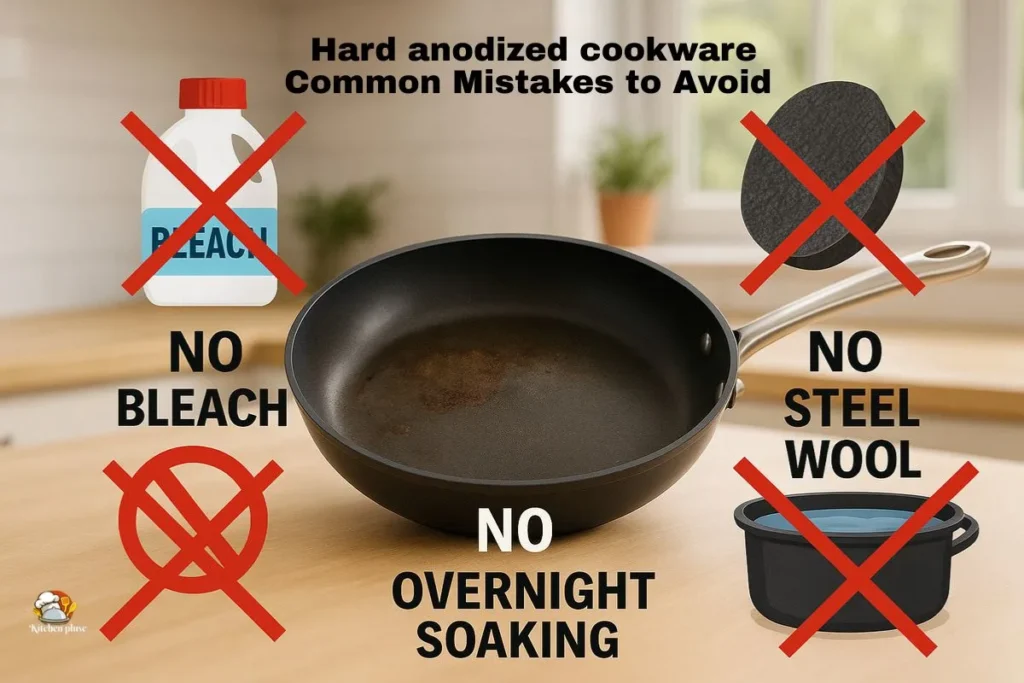
Even durable hard anodized cookware can wear out early if you make these common mistakes:
- Using bleach or oven cleaners. These harsh chemicals damage the nonstick coating and may void warranties.
- Soaking pans overnight. Long soaks loosen the protective layer and cause staining.
- Using sharp utensils. Knives, forks, or steel wool can scratch the surface and shorten the 5–10 year lifespan.
👉 Curious how this compares to other cookware types? Read my guide: Hard Anodized vs Nonstick Cookware.
Recommended Cleaning Tools (Safe & Affordable)
Over the years, I’ve tested many tools on Calphalon, T-fal, and Cuisinart pans. These are the ones that actually work without scratching the coating:
- Scotch-Brite Non-Scratch Sponge → Gentle on nonstick, safe for daily cleaning.
- Dawn or Seventh Generation Dish Soap → Effective, eco-friendly, and mild on anodized coating.
- Nylon Brush → Perfect for tough stains and burnt food (avoid steel wool).
- Cookware Cleaning Pads (Non-Abrasive) → Great for deep scrubbing without damaging the surface.
- Bar Keepers Friend (optional) → Use occasionally for stubborn outside stains.
👉 Want my full list of top-rated tools and cookware sets? Check my guide: Best Hard Anodized Cookware Brands.
Final Verdict – Keep Your Cookware Like New
From my years of testing Calphalon, T-fal, and Cuisinart pans, I’ve learned one thing: the right cleaning routine makes all the difference.
Hand wash with mild dish soap and a soft sponge safest daily method.
Use baking soda or vinegar for burnt food restores pans without scratching.
Avoid bleach, sharp utensils, and long dishwasher cycles these shorten lifespan.
If you follow these simple steps, your hard anodized cookware will stay durable, scratch-free, and safe for your family—lasting well beyond its 5–10 year coating lifespan.
👉 Still deciding which cookware set is best for you? Check my full buying guide: Best Hard Anodized Cookware.
FAQ – How to Clean Hard Anodized Cookware
How to clean hard anodized cookware with vinegar?
Mix water and 2 tablespoons of vinegar, boil for a few minutes, let it cool, then wipe with a soft sponge.
Vinegar works well for removing tough stains or discoloration. Avoid using too much vinegar or soaking for hours, as it may weaken the coating over time. Always rinse with warm water afterward.
How to clean hard anodized cookware with baking soda?
Soak the pan with warm water and 2 tablespoons of baking soda for 20–30 minutes, then scrub gently with a nylon brush.
Baking soda is safe and non-abrasive, making it perfect for burnt food removal. Unlike bleach or oven cleaners, it won’t harm the nonstick coating. Rinse well and dry with a soft towel.
How to clean hard anodized cookware exterior?
Use mild dish soap, warm water, and a soft sponge to clean the exterior.
For stubborn stains outside the pan, try a gentle cleanser like Bar Keepers Friend. Never use steel wool or bleach, as they scratch the anodized surface. Wipe dry immediately to keep the exterior looking new.
How to clean hard anodized cookware Calphalon?
Calphalon recommends hand washing with mild dish soap and a soft sponge.
While some brands advertise dishwasher safety, Calphalon specifically advises against it. High heat and detergents reduce nonstick lifespan. Always let the pan cool before washing to prevent warping.
How to restore anodized aluminum cookware?
Restore pans with a baking soda soak or vinegar boil, followed by gentle scrubbing with a nylon pad.
Over time, anodized pans may lose shine or collect burnt spots. You can restore their surface by repeating safe cleaning cycles and avoiding abrasive tools. For exterior stains, a gentle cookware cleaner can help.
How to restore Calphalon pots and pans?
Soak with baking soda and warm water, scrub gently, and avoid dishwasher use.
Calphalon cookware typically lasts 7–10 years with care. To restore performance, remove burnt food using baking soda or vinegar, then clean regularly by hand. Avoid sharp utensils and always dry pans immediately after washing.
About the Author:
MD Soazim is the founder of Kitchenpluse.com and a passionate home cook with years of experience testing cookware brands like Calphalon, T-fal, and Cuisinart. He writes honest, hands-on guides about cookware safety, cleaning, and buying tips to help U.S. families make smarter kitchen choices.
👉 Want to see his top recommendations? Check the full guide: Best Hard Anodized Cookware 2025.

